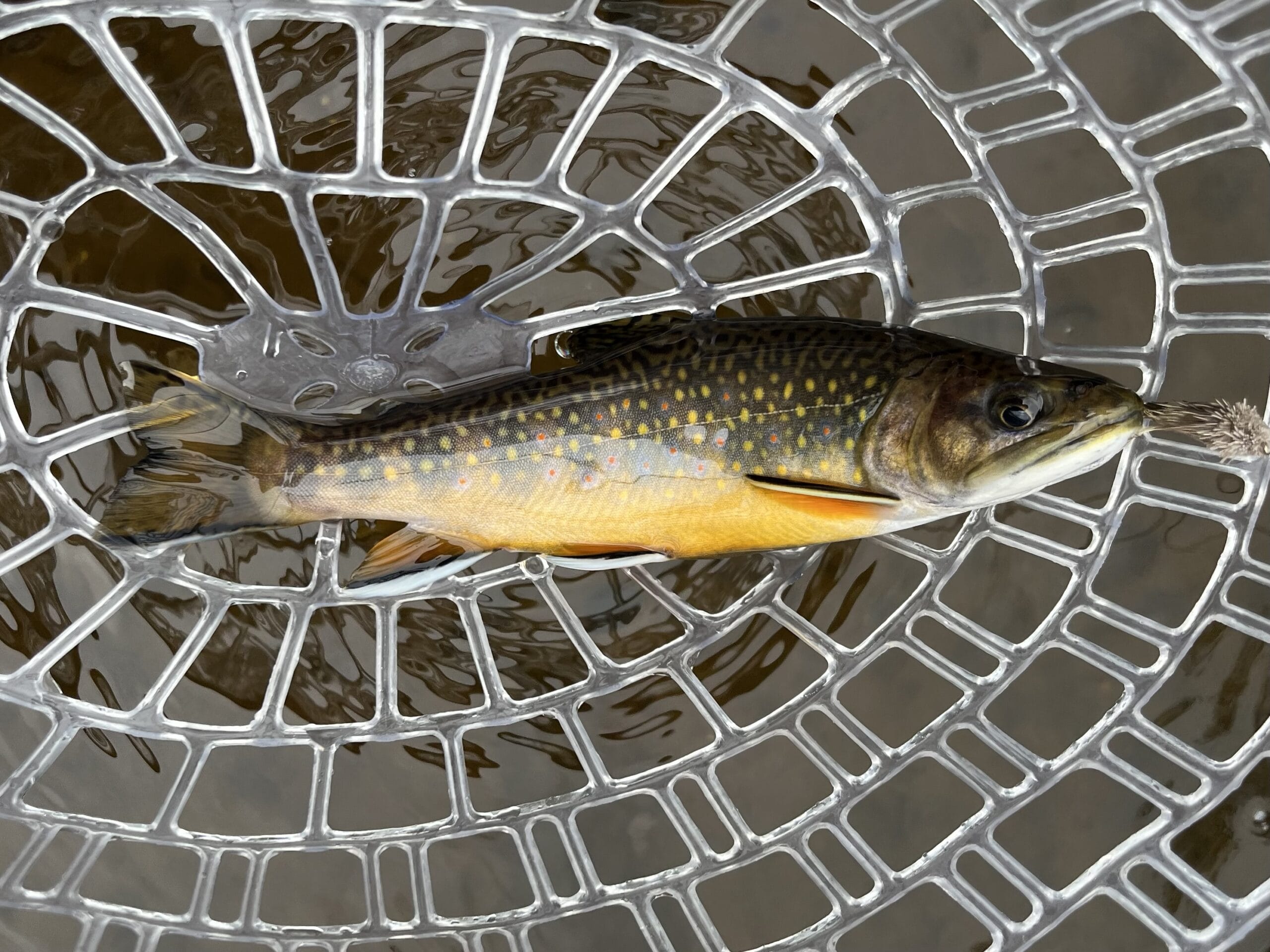Both anglers and trout find less stress upstream
Upon crossing the Mackinac Bridge into the Upper Peninsula of Michigan, I exhaled and slowed a bit. The speed limit drops from the Lower Peninsula, but so does the pace of life as the highway crosses through friendly small towns and across seemingly countless trout rivers and their tributaries.
I was driving west to tour some TU restoration projects in Wisconsin and the Upper Peninsula, and since some of the project sites were still open for fishing, I packed along my 4wt Douglas Upstream fly rod.
The bridge – the most iconic piece of infrastructure in the Great Lakes – opened upstream habitat for “trolls” like me, as Lower Peninsula residents are known in the U.P. (we live “under” the bridge). And while we generally consider infrastructure to encompass bridges like the “Mighty Mac,” it’s the infrastructure of small dams and culverts under road/stream crossings that act as aquatic organism passage barriers and keep trout from accessing upstream habitat when warmer downstream water increases their stress. It seems appropriate, then, that it’s federal infrastructure funding that is fueling the restoration of these streams to provide cooler habitat for trout and increased flood resilience for rural communities.
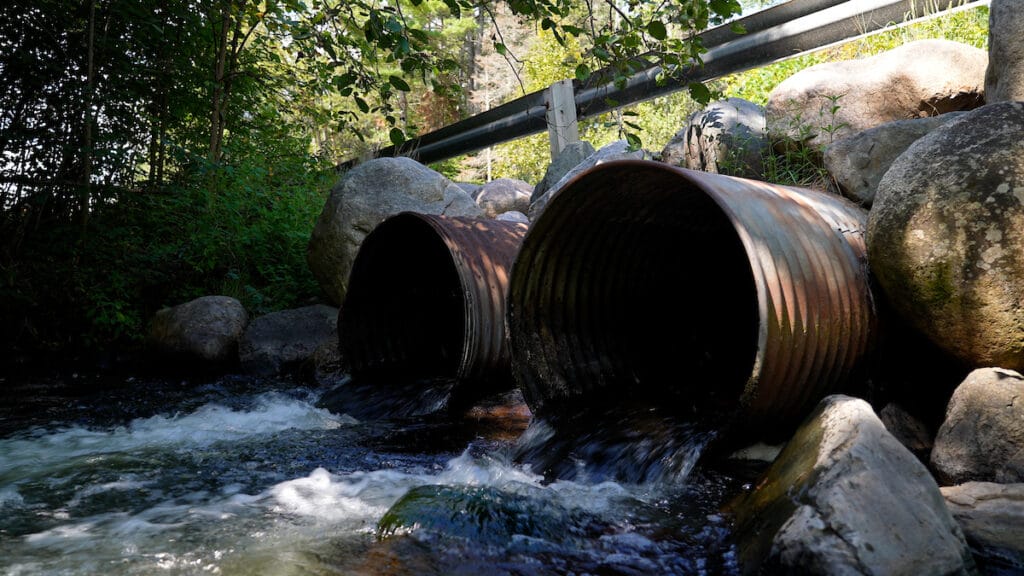
Reconnecting a river
In the Ottawa National Forest (ONF), TU has several projects completed, planned and underway in partnership with the U.S. Forest Service (USFS) through a $40 million national partnership funded through the Bipartisan Infrastructure Law of 2021 and the Inflation Reduction Act of 2022, and building upon years of partnership before that.
Sarah Topp, U.P stream restoration manager for TU, shared the GPS coordinates of several projects with me to tour on my travels across the peninsula. These included multiple culvert replacements and small dam removals on tributaries to the Ontonagon River.
One such project was on the East Branch of the Ontonagon River, a Wild and Scenic River. The East Branch runs through the ONF, crossing M-28 in Kenton, and is part of TU’s Western U.P. Wild Trout Priority Water. It’s also designated as Type 3 trout stream by the Michigan DNR, open year-round north of M-28.
Trout Unlimited teamed with the USFS to remove remnant dam pilings here in 2021, reconnecting 20 miles of habitat. Further upstream, TU is planning to remove the Lower Dam of the East Branch of the Ontonagon, which began with a request from the Fred Waara TU Chapter in Marquette. Together, these projects will reconnect all 67 miles of the East Branch for the first time since 1965.
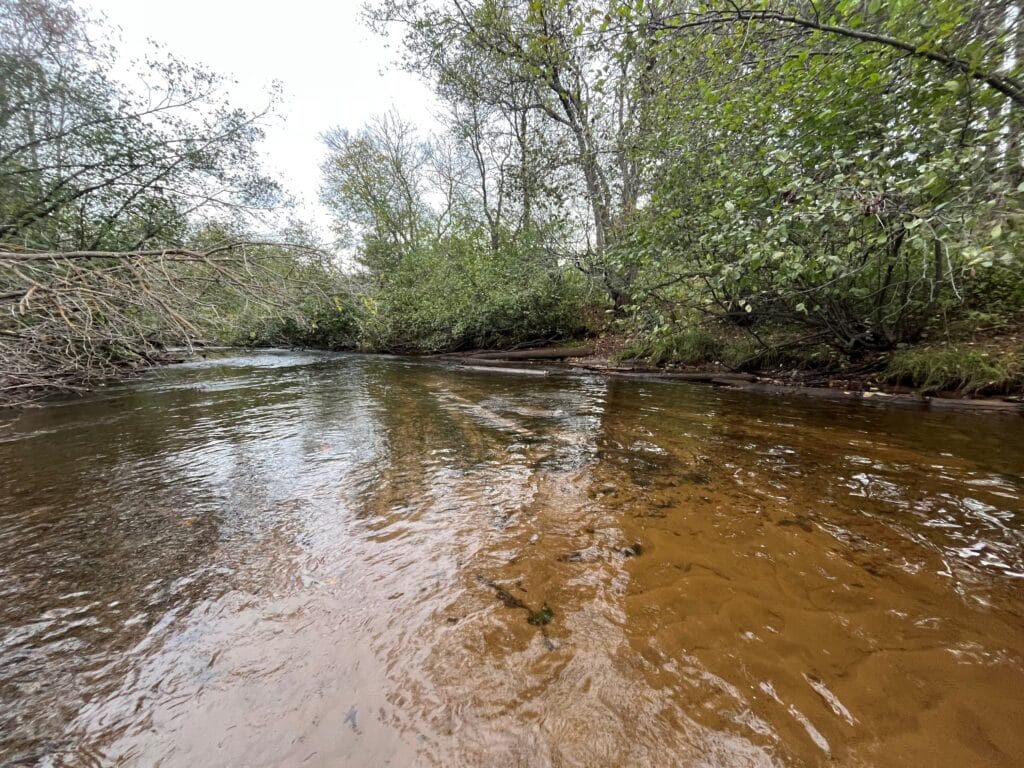
The impacts of these dams on trout habitat have been recognized by fisheries biologists for decades. In 1985, Raymond P. Juetten, former Michigan DNR Fisheries Biologist, wrote about the Ontonagon watershed in Trout Streams of Michigan, published by Michigan United Conservation Clubs:
“The East Branch from Spring Lake to Lower Dam Impoundment was once prime brook-trout water. Heavy siltation caused by the many old beaver dams and Upper Dam Impoundment makes it presently unsuitable, though, for trout production. These blockages probably warmed the river here, making it more suitable to warmwater species than trout. The silt covered many trout-spawning areas, and the brook trout disappeared.”
Fishing a restored stream
I entered the river at the USFS access site in Kenton, downstream from the dam removal pilings on the north side of M-28. The vegetation was thick along the streambanks, and I ducked under several branches until I came to a small pool with a perfect foam line flowing through it. It looked trouty. Not seeing any rises, I rigged up a dry-dropper with a tungsten hotspot pheasant tail nymph under an elk hair caddis. No dice.
I heard splashing coming from upstream and thought maybe another angler was following me, but I figured an angler would call out if he or she had seen me. Was it a bear, maybe? I’ve had that encounter before and looked for exit routes along the streambank. The splashing resumed, and a doe stepped around the bend into view, curious what I was doing in the stream.
“Sorry, I’m fishing this hole,” I told her, and she darted off into the side brush. I heard her re-enter the river downstream of me. “Snaking the next hole,” I thought, “I’d better make this one count.”
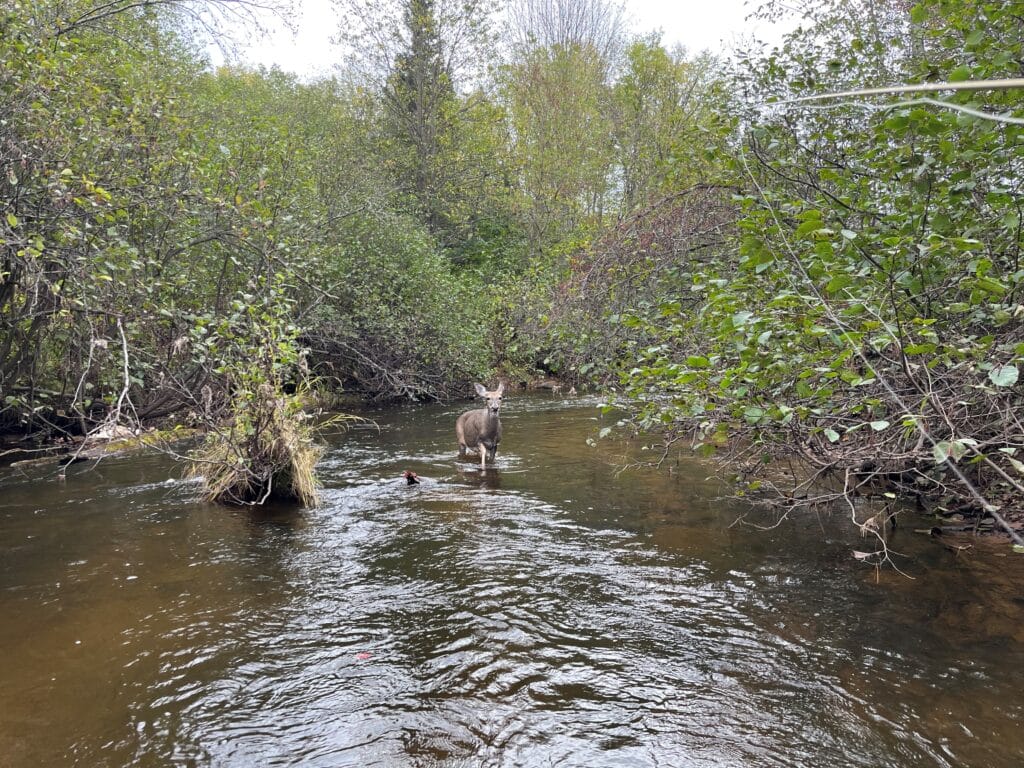
I tied on a soft hackle tunghead pheasant tail under the elk hair caddis and drifted it along the foam line. I felt the tug, set the hook and stripped in a beautiful little brook trout to my net just as it spit the hook and escaped through a gap in the netting. Thrilling. I tied on an olive muddler minnow, stripped it through the hole just under the surface, and watched another brookie, about eight inches, chase it down like a pike and strike it with similar aggression. I landed it cleanly this time, took a photo, removed the hook, and released it.
In the moment I beheld it, I was struck as I always am by the beauty of the wild native brook trout in its fall spawning vibrance – golden belly and orange fins tipped in white, the unrestrained vermiculation on its back like a treasure map to something profound yet unknowable and the angelic blue halos around its red spots. Time seems to stand still when there’s a wild brookie in the net.
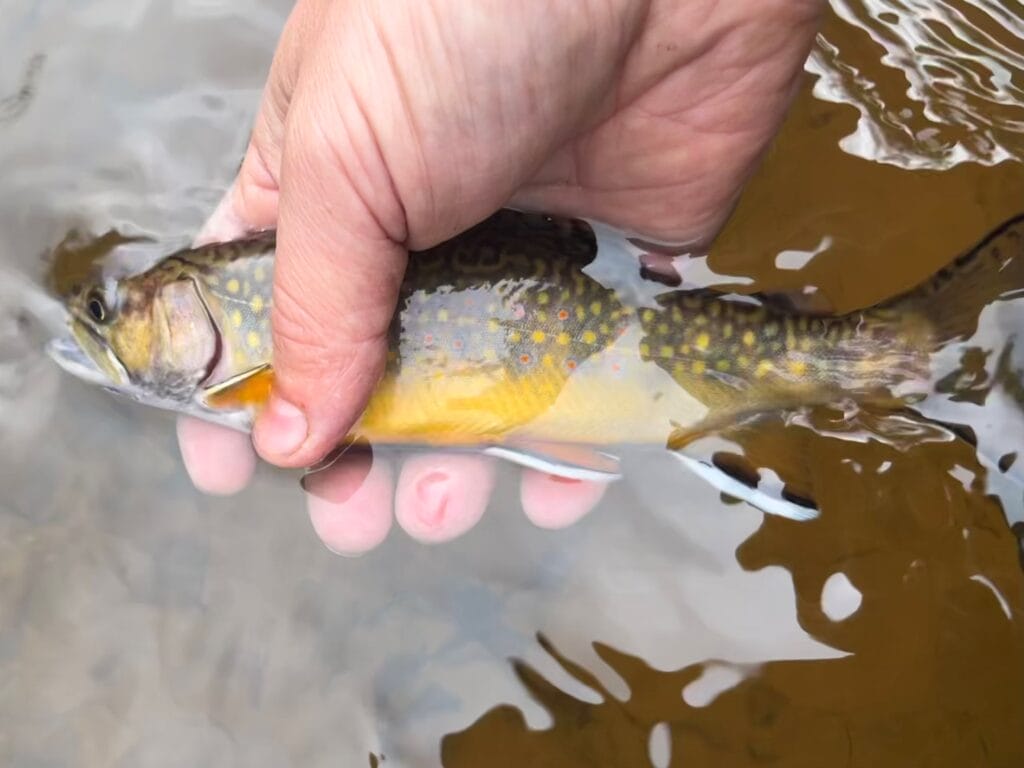
By this time a few small rises were beginning to pop along the foam line, so I tied on a Betty McNault in deference to Robert Traver – pen name of John D. Voelker – who fished these parts with a Parachute Adams and Betty McNault and whose Trout Madness is a seasonal devotional for me. A strike, but no take. I tried a Parachute Adams. Same result. Finally, I tied on a small Griffith’s Gnat – named for TU founder George Griffith – and hooked a tiny, four-inch brookie.
After releasing it, I decided it was time to get back on the road to head home in the opposite corner of the state in Ann Arbor. Waders off, driving on, I reflected on how I felt catching the three brookies just downstream from a TU restoration project, knowing that they’d soon be able to get even farther upstream to the headwaters of the river. I felt at peace, satisfied and grateful: less stressed.
I felt like a brook trout escaping upstream.



